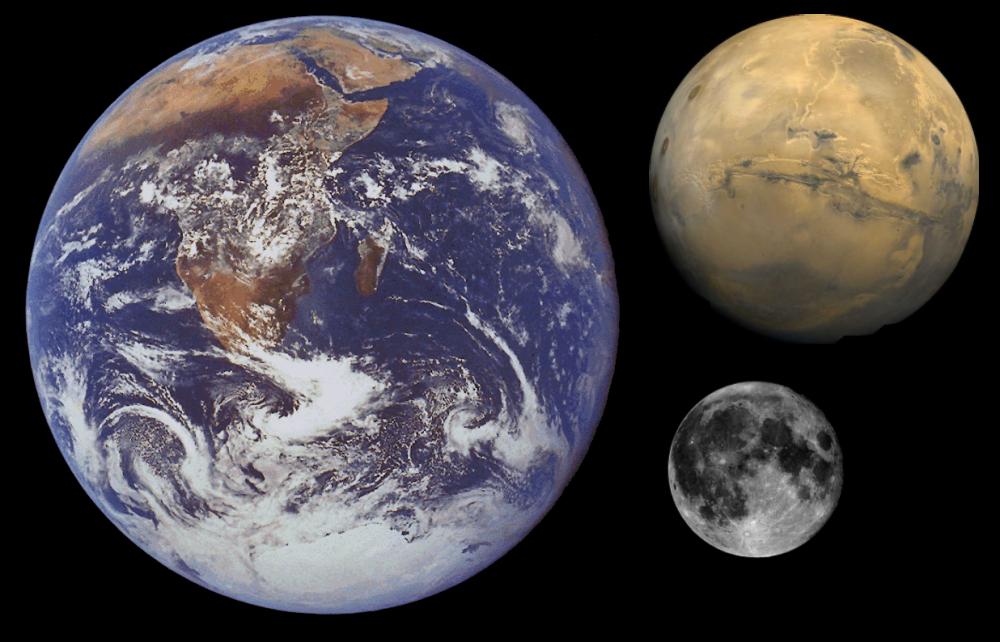The results of a new study show that billions of years ago the atmosphere was on the moon

The natural satellite of the Earth stirs the minds of learned men and ordinary people for thousands of years. Even now, possessing the most modern scientific instruments, astronomers and their colleagues from other branches of science can’t say exactly how the Moon was formed. It is also not possible to find out what the moon was a few billion years ago. Of course, there are theories and hypotheses on this subject, but most of them have certain flaws.
Anyway, there is still a lot to be learned about the Moon. Some discoveries may be unexpected. Recently, NASA published the results of a study, according to which the Moon had an atmosphere long ago. True, not oxygen, here you should not be deceived, imagining a pastoral picture with blue sky, ponds and living organisms. It is about the atmosphere of volcanic gases.
Apparently, there were so many eruptions that the gases emitted by volcanoes did not have time to go into outer space and remained on the Moon in the form of a not too dense atmospheric layer. Of course, it was not a full-fledged atmosphere, it left soon after the frequency of volcanic eruptions decreased. The truth “soon” is by geological standards, not human. But, nevertheless, the Moon was not always a dead stone ball.
Atmospheric components were common for volcanic emissions. These are carbon monoxide, sulfur dioxide and other compounds. The fact that there were really many eruptions was hardly doubted by anyone - there is enough evidence on the lunar surface. The maximum thickness of the atmosphere reached 3.5 billion years ago. Appearing, it continued to exist for about 70 million years. Then all the gases just went into space.
The maximum amount of gaseous compounds came to the surface after lava flows filled the Sea of Tranquility and the Sea of Rains. These were two very large-scale eruptions that occurred 3.8 and 3.5 billion years ago, respectively. The lava fields were studied by Apollo astronauts, missions 15 and 17. They managed to collect rock samples that helped determine the age of the eruptions and the approximate composition of gases escaping from the surface.
During the eruptions, not only sulfur dioxide, carbon dioxide, but also water vapors appeared on the surface. "The total amount of water released during eruptions is twice the volume of water in Lake Tahoe ." Most of the vapors went into space, but some remained on the lunar poles. Perhaps there is still ice there, which was formed in ancient times.
Above it was said that the atmosphere was not very dense. But this is compared with the Earth or the gas giants. At the same time, this atmosphere was denser than the gas cover of Mars today. Plus, the moon was three times closer to Earth. Without a doubt, that Moon is an extremely curious spectacle for the Earth observer. It is a pity that there were no observers on Earth at that time, so there was no one to admire and admire all this.

The fact that there is water ice on the moon is a huge plus for possible colonists of the natural satellite of the Earth. Now in the US, they are increasingly saying that the Moon should be colonized before Mars, and ice deposits can serve as an important argument in favor of the establishment of a colony. Of course, this ice still needs to be studied in order to understand whether it is really suitable for humans, whether there are any impurities that will make it impossible to use as a source of water.
In addition to the poles, water ice on the moon is in craters and other places where the sun's rays do not penetrate. Plus, there is a lot of free energy here - the sun's rays illuminate a huge area. And with the help of energy, colonists will be able to get fuel for rockets, as well as oxygen for breathing.
NASA even developed a 16-year program for the exploration of the moon. The first flight, according to the authors, should take place 12 years after the start of the project. Then regular flights to the Earth’s satellite begin. The total cost of the project is $ 87.7 billion. In 16 years, according to the initiators, there will be a colony of “lunonavtov” on the moon, which will be able to produce about 300 cubic meters of water per year. Water will be used for the needs of the colony and for the production of fuel.
And all this became possible due to the fact that billions of years ago, powerful volcanic eruptions occurred on the moon with the release of a large amount of gases.
All Articles